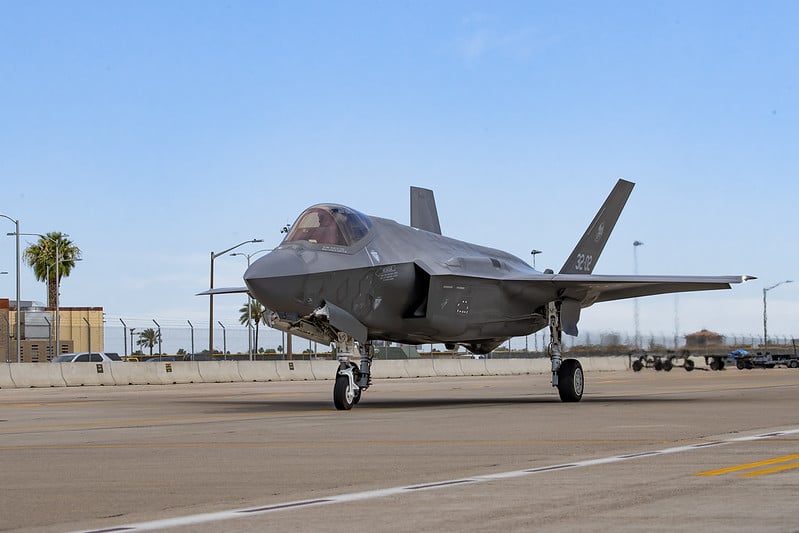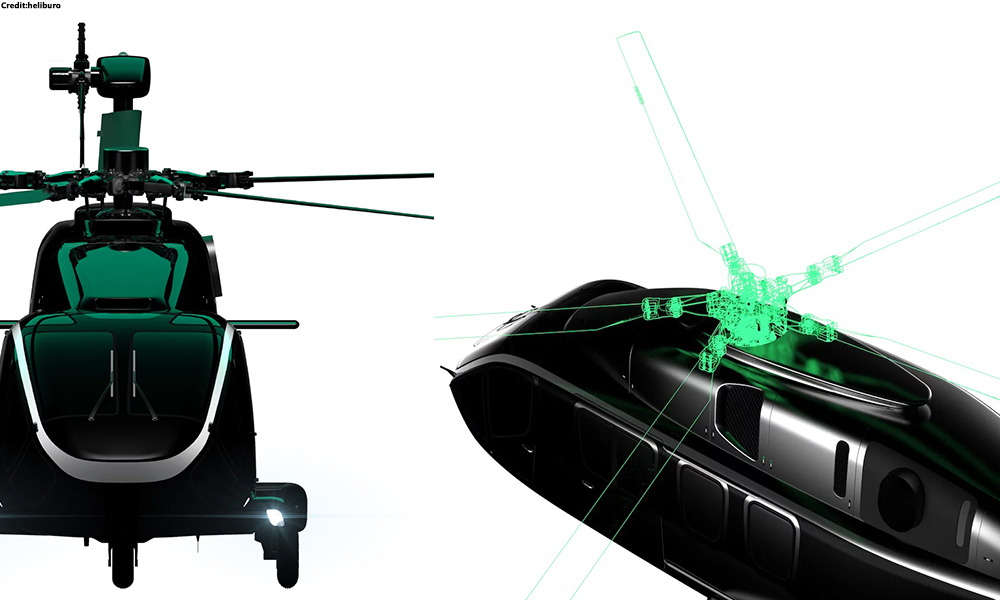Defence
UAE suspended talks over Multi billion dollar F-35 deal

In a significant development for military procurement in the Middle East, the United Arab Emirates (UAE) has decided to suspend talks regarding a multi-billion dollar deal for F-35 Joint Strike Fighters.
This decision, which affects a proposed acquisition of fifty F-35 jets, along with advanced drones and munitions, stems from ongoing concerns over stringent U.S. restrictions aimed at safeguarding against potential Chinese espionage.
Air India to Enhance Long-Haul Travel with A350s as Competition Increases
The UAE, which has long expressed interest in acquiring the F-35 for its advanced stealth technology and operational capabilities, announced the suspension in December 2021. This aircraft would have marked a milestone for the UAE, making it only the second nation in the region, after Israel, to operate these sophisticated fighter jets.
A senior UAE official recently reiterated the country’s position, stating, “Our position remains unchanged and we do not anticipate discussions regarding the F-35 being reopened for the foreseeable future.” The official cited ongoing technical requirements, sovereign operational restrictions, and cost-benefit analyses as key factors in the decision to pause negotiations.
Boeing Completes First Flight of UK E-7 Wedgetail Aircraft
While there is speculation about a potential revival of talks should Donald Trump win a second term as president, the UAE has made it clear that the same challenges that halted discussions in 2021 persist today. The F-35, known for its cutting-edge sensor suite and advanced electronic warfare capabilities, evolved from the Lockheed Martin X-35, which won the Joint Strike Fighter program in 2001, besting the Boeing X-32.
As of now, the U.S. remains the primary customer and financial backer of the F-35 program, with additional contributions from allied nations including the UK, Italy, the Netherlands, Canada, Turkey, Australia, Norway, and Denmark, collectively pledging over $4.375 billion towards its development. The future of the UAE’s aspirations for F-35 acquisition remains uncertain, contingent on both regional security dynamics and U.S. political developments.

Defence
Russia’s NV.17 Hybrid Helicopter Aims to Balance Light and Heavy Helicopter Needs

As Western sanctions continue to impact Russia’s aviation sector, the country is making significant strides in advancing its domestic aerospace capabilities.
Despite the ongoing challenges, Russia has unveiled the Heliburo HB.17, a cutting-edge hybrid-powered medium-class helicopter that promises to reshape both commercial and military aviation.
The helicopter is currently in the technical design phase, with plans for its first flight slated for 2027. This marks a major step forward in Russia’s efforts to modernize its aviation fleet and reduce reliance on foreign technology.
This country tops visa rejections in the popular Schengen countries
The HB.17 is designed as a versatile, multi-role aircraft, capable of performing a wide range of functions. It is built to handle cargo transport, passenger carriage, reconnaissance, and close air support missions. With its robust design and flexible capabilities, the HB.17 is expected to meet the needs of both military and commercial operators, offering a solution for missions requiring a greater capacity than light helicopters but avoiding the limitations of larger aircraft.
One of the most innovative features of the HB.17 is its hybrid power plant. This combination of conventional and electric technologies enhances fuel efficiency, allowing the helicopter to stay airborne for up to seven hours without needing to refuel.
This extended operational endurance makes the HB.17 particularly well-suited for long-duration missions, providing a significant advantage over traditional helicopters. Additionally, the HB.17 will be equipped with modern avionics, ensuring advanced navigation, communication, and operational capabilities.
Qatar Airways Cargo and MASkargo Launch New Strategic Partnership
The HB.17 is positioned to compete with other medium-class helicopters such as the Kamov Ka-60/62 and the Mil Mi-38. However, its hybrid powerplant and modern avionics set it apart, offering a more efficient and technologically advanced alternative.
Its multi-role versatility, combined with its fuel efficiency and cutting-edge systems, gives it a competitive edge in the evolving aviation landscape. The introduction of the HB.17 follows recent reports of Russia receiving a new batch of armored vehicles from the UAE-based Streit Group.
Russia has traditionally focused on producing helicopters for defense purposes, but this time, it appears to be venturing into the civilian helicopter market with the HB.17.
This, along with the ongoing development of the HB.17, reflects Russia’s continued efforts to modernize its military assets and increase its self-reliance, even as sanctions continue to pressure its defense and aerospace sectors.
As Russia faces mounting geopolitical challenges, the HB.17 stands as a symbol of resilience, technological innovation, and determination to maintain its military and aviation capabilities.
-

 Aviation2 months ago
Aviation2 months agoMicrosoft Flight Simulator Raises $3 Million to Bring Back the An-225 Mriya
-

 Airlines2 months ago
Airlines2 months agoQatar Citizens Can Travel to the United States Without a Visa
-

 Aviation2 months ago
Aviation2 months agoQatar Airways bans these new Electronic Devices on plane
-

 Airlines2 months ago
Airlines2 months agoJapan Airlines Rolls Out Free Domestic Flights to International Passengers
-

 Defence2 months ago
Defence2 months agoWhich Country Has the Largest Fleet of Fighter Aircraft?
-

 Airport2 months ago
Airport2 months agoWestern Sydney Airport Welcomes Its First Plane After 6 Years of construction
-

 Airlines4 days ago
Airlines4 days agoDAMAC Air: Dubai’s New Luxury Airline Offers Free Flights for Registration
-

 Aviation2 months ago
Aviation2 months agoDid you know ? Once Boeing 747 carried 1088 passenger in 1991








